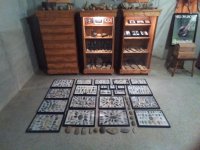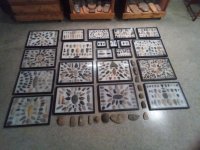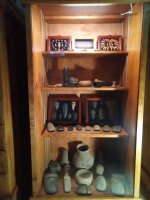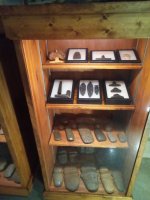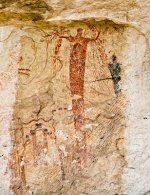When I was a kid, I spent many days roaming the woods and fields with my grandfather, hunting Civil War relics with a metal detector. At first I just carried his digging tools, but later graduated to his "old machine." One of the side benefits of that hobby, was finding Indian arrowheads (everything was an "arrowhead" to me).
My grandfather on the other hand, he knew his stuff. He carefully cataloged it, and kept records of where and when he'd found it. He had cigar boxes full of that stuff. No idea how many really. When he realized he had taken the white flag, he contacted I believe it was William and Mary college (then) and donated them to the school. It may have been another college, but W&M sticks out in my mind. They came to pick them up and he and a couple fellows from the school talked for hours about them as he told the stories.
As an aside. He had a fairly big field on his place, with a creek running another 25-30 yards over in the woods. At the bottom of that field, there was a vein of red clay. From time to time we kids would turn up a piece of broken pottery that must have been there for the Lord himself only knows how long. We figured the natives would come there for that vein of red clay, and the water nearby and make pottery. The pieces we found were the ones that didn't turn out right, or that got broken in the process. I often thought about how sad the person making it must have been when something didn't go as planned, and wondered what they would have thought of my mothers ball mason jars.
We also found bits and pieces of what we called "Peace Pipes" but I've since learned are more properly called "Trade Pipes" in the area too. They were just small pieces and inch or two long, but you could picture those long clay pipes you see men smoking in old paintings and such.

